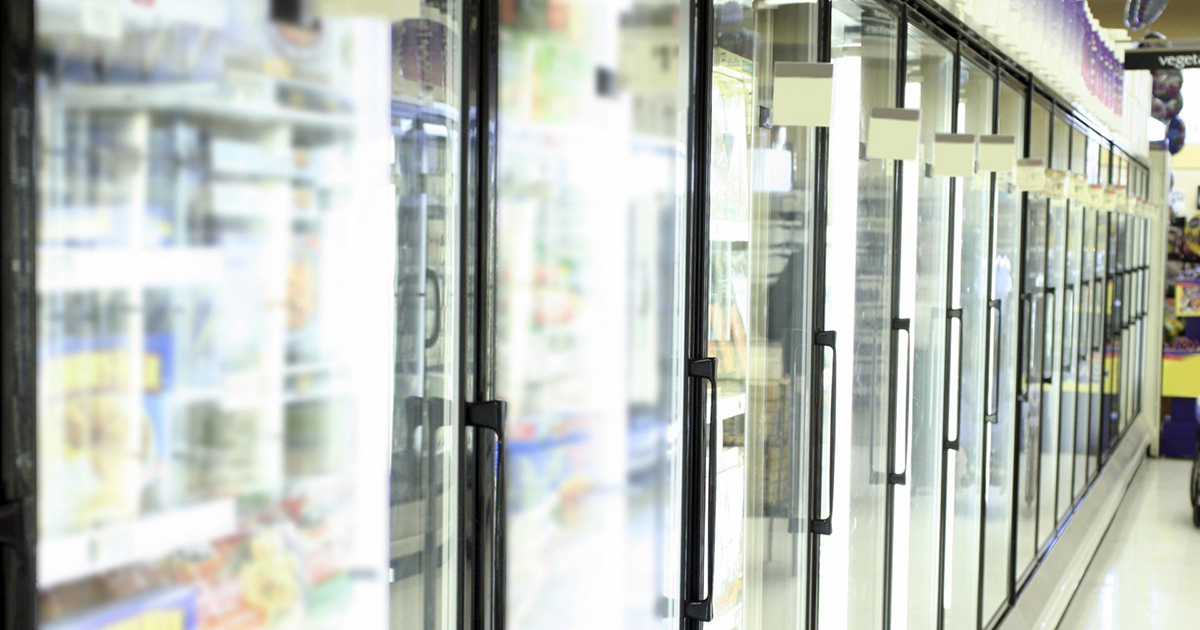
Effective strategies for using thermal energy storage in refrigerated facilities
Industrial refrigeration consumes more energy per cubic foot than any other utility load. In everything from a corner store freezer to an industrial cold storage facility, keeping things cool consumes a lot of energy and has a large peak demand. For owners and operators, these facilities are expensive to operate. For utilities, refrigeration creates a significant impact on the grid.
Refrigeration thermal energy storage (RTES) is an emerging technology which presents an opportunity to save energy and reduce or shift peak demand in refrigerated facilities. This can lead to both energy savings and greater resilience. However, how much energy these technologies can save—and how they can be supported by energy efficiency programs—requires additional study, especially in cold climates.
For the ComEd Energy Efficiency Program, Slipstream evaluated the energy savings potential for three RTES approaches:
- Using the static thermal mass of the stored product. This approach, sometimes referred to as thermal flywheeling, has been practiced manually for some time, but new cloud-connected technologies allow for low-cost, precise implementation.
- Harnessing tuned phase change materials as thermal mass, combined with precise controls.
- Using the existing refrigeration system in parallel with an external storage system
For each approach, we defined the market in the ComEd service territory, quantified the potential energy savings, and established the feasibility of shifting load throughout the day.
Results
Thermal energy storage in refrigerated facilities has the potential to save kWh for a variety of commercial customers. In addition to energy savings, the study also reiterated the potential to reduce peak demand through load shifting measures. In either case, the quantity of savings depended on the control strategy.
| Strategy | Payback | Types of refrigeration | Ideal building type |
|---|---|---|---|
| Static thermal mass | Lowest simple payback | Freezers only | Large industrial cold storage facilities |
| Phase change material | Higher initial cost | Freezers + coolers | Smaller buildings (i.e. grocery stores) |
| External storage | Significant payback time | Freezers + coolers | Facilities that can afford high upfront installation costs |
Based on the study, we identified a potential two-tiered approach to implementing RTES in facilities at scale:
- Tier 1: static thermal mass (controls only) applications in larger (>100,000 sq. ft.) industrial cold storage facilities. Awareness is the largest barrier to this approach.
- Tier 2: a smaller, more targeted static thermal mass approach for smaller facilities or fleets (i.e. grocery store chains) and/or a phase change material solution.
For more on Phase I of the project, see the project page on the ComEd Energy Efficiency Program website.
View our webinar
To learn more about the project and other RTES case studies, watch the recording of our free webinar, Case studies in energy storage for refrigeration.
Phase II: Join our pilot
In Phase II, we will study onsite performance of the approaches identified as the most promising in Phase I—static thermal mass and phase change materials.
The project team is currently recruiting for demonstration sites.
RTES pilot participants will receive:
- Generous incentives from ComEd
- Technical assistance from start to finish (including establishing the most cost-effective energy storage schedule)
- Detailed monitoring data.
- Potential benefits from the system installation, like reduced operation and maintenance costs, energy usage and energy bills.
- An evaluation of opportunities for refrigeration system enhancements and incentives for your facility beyond the RTES pilot, such as refrigeration variable frequency drives and lighting retrofits
Ideal Candidates for the RTES pilot
- Existing cold storage facilities
- Grocery stores
- Other buildings with large refrigeration systems
If you are a commercial refrigeration facility owner interested in participating in the project, please contact Christopher Sala.